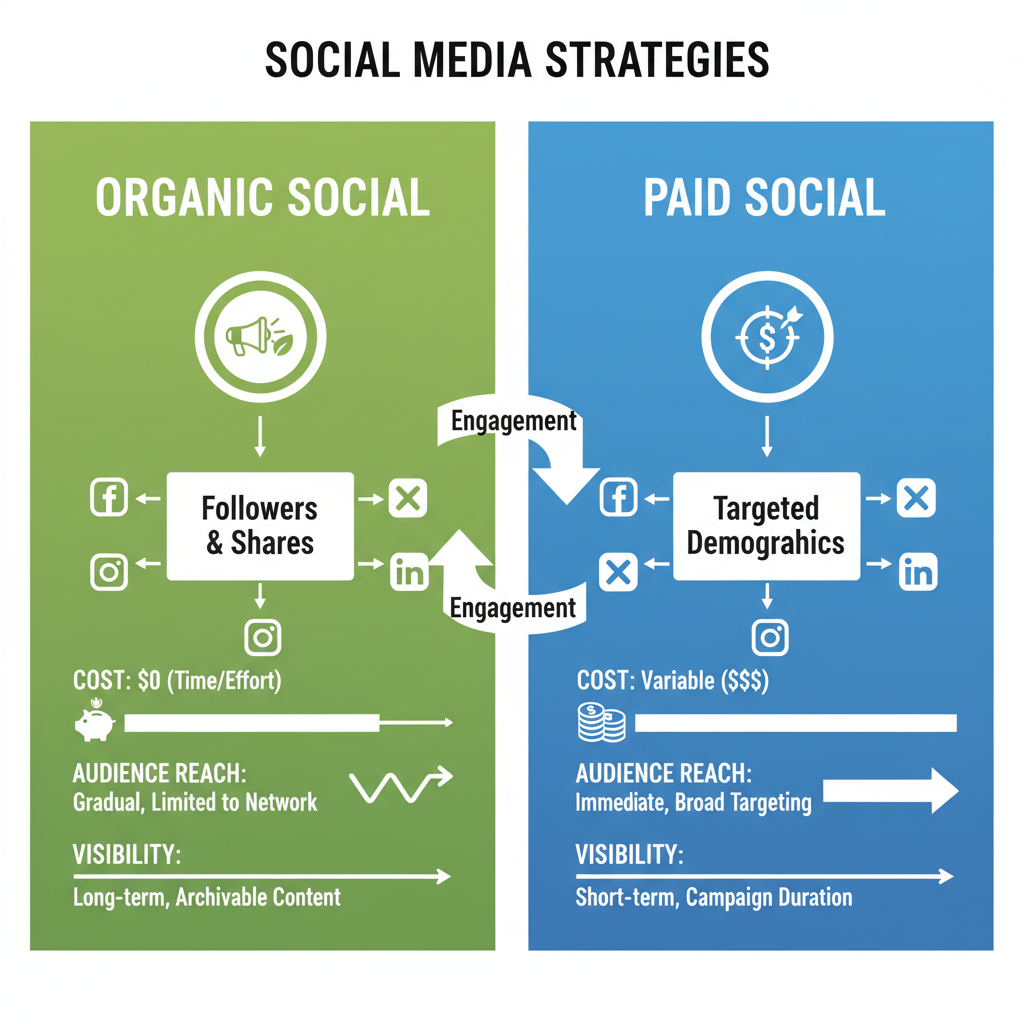what is organic social and why it matters for your brand
Discover what organic social media is, how it differs from paid campaigns, and why it’s vital for building authentic brand connections and loyalty.

What is Organic Social and Why It Matters for Your Brand
In today’s competitive digital marketing landscape, understanding what is organic social can be the key to building lasting customer loyalty without draining your budget. Organic social refers to the free distribution of content—posts, photos, videos, stories, and more—that brands and individuals share naturally with their audience on social platforms, without paying for reach or impressions. Unlike paid social campaigns, which depend on ad budgets, organic social media relies on authentic connections, trust, and community to grow your visibility.

---
Defining Organic Social Media vs. Paid Social
Organic social media includes all brand-generated posts, interactions, and conversations that reach audiences without direct monetary promotion. These posts appear in followers’ feeds or through shares, hashtags, and organic discovery.
Paid social differs in that it uses allocated budgets to serve content to audiences beyond organic reach via targeted advertising formats like sponsored posts, paid campaigns, or boosted stories.
Here’s a straightforward comparison:
| Aspect | Organic Social | Paid Social |
|---|---|---|
| Cost | No direct cost | Requires budget |
| Reach | Limited to followers & their networks | Targeted to audiences you select |
| Speed | Gradual buildup over time | Immediate exposure |
| Longevity | Strong, ongoing relationships | Short-term, campaign-dependent |
---
A Brief History and Evolution of Organic Reach
In the early days of Facebook, Twitter, and Instagram, brands enjoyed substantial organic reach—often reaching 15–20% of followers with each post. However, as platforms shifted to prioritize user experience, filter irrelevant content, and monetize feeds, algorithms gradually reduced average organic reach (on Facebook, often under 5% today).

Key timeline:
- 2010–2012: High engagement with purely organic strategies.
- 2014 onwards: Algorithm updates lead to a significant drop in organic impressions.
- Today: Relevance and engagement dictate visibility instead of chronological order.
---
Benefits of Organic Social for Brand Building
While reach may be lower than it once was, organic social still delivers unique brand advantages:
- Trust and authenticity: Builds genuine connections with audiences.
- Cost efficiency: Sustains presence without advertising spend.
- Community building: Nurtures customer relationships through interaction.
- Content testing: Gauge engagement before investing in paid promotion.
---
Major Platforms and Their Organic Growth Features
Each platform offers distinct tools for non-paid reach:
| Platform | Key Organic Features |
|---|---|
| Groups, posts, live streams, events | |
| Stories, Reels, posts, strategic hashtags | |
| Articles, polls, native video | |
| TikTok | For You Page algorithm, trending sounds |
| Twitter/X | Retweets, threads, Twitter Spaces |
| Pins, boards, idea pins |
---
Strategies to Increase Organic Reach
Growing reach without paid ads requires consistency, relevancy, and platform-savvy tactics:
- Post consistently when your audience is active.
- Use compelling visuals and interactive content formats.
- Include relevant keywords and hashtags for discoverability.
- Actively engage with your audience and other creators’ content.
- Collaborate with influencers and brand partners for cross-exposure.
---
Quality, Consistency, and Authenticity Matter
To succeed organically:
- Deliver value-driven content that educates, entertains, or inspires.
- Stick to consistent posting schedules and maintain a cohesive tone.
- Share behind-the-scenes updates or authentic customer stories to humanize your brand.
---
Leveraging Community Engagement and UGC
Active participation strengthens relationships:
- Reply to comments and messages promptly.
- Join topic-specific groups and discussions.
- Share user-generated content (UGC) as authentic testimonials.

UGC sparks word-of-mouth growth and reinforces brand credibility without added production effort.
---
How Algorithms Shape Organic Visibility
Social media algorithms prioritize:
- High engagement signals (likes, comments, shares).
- Content freshness.
- User relationship with the profile.
- Media formats that encourage time spent (e.g., videos).
Adapt by:
- Experimenting with different content types.
- Reviewing analytics to identify what works.
- Using native features like Stories or polls to boost relevance.
- Encouraging followers to enable notifications.
---
Key Metrics for Measuring Organic Success
Tracking performance informs strategy adjustments:
| Metric | Description |
|---|---|
| Engagement Rate | Interactions relative to audience size |
| Reach | Unique users exposed to your content |
| Impressions | Total appearances in feeds |
| Click-through Rate | Link clicks compared to impressions |
| Follower Growth | Increase in social followers |
| Share of Voice | Brand mentions vs. competitors |
---
Examples of Effective Organic Campaigns
Starbucks “Red Cup Contest”
Invited fans to decorate red cups and post with a branded hashtag, driving massive engagement with no paid promotion.
Chipotle TikTok Challenges
The #GuacDance challenge leveraged trending audio to encourage guacamole-themed dance posts, creating record-setting app engagement.
---
Integrating Organic Social with Other Marketing Channels
Organic efforts thrive when integrated:
- Share snippets of blog or website content on social media.
- Promote email list sign-ups via organic posts.
- Repurpose live event content into shorter shareable clips.
- Encourage offline customers to connect on social.
---
Future Trends in Organic Social
Expect to see:
- Continued short-form video growth on multiple platforms.
- Expansion of private, niche online communities.
- AI-powered content tools for faster production.
- Emphasis on authentic, unfiltered storytelling over perfection.
---
Summary and Next Steps
Mastering what is organic social allows brands to build relationships, test ideas, and maintain presence without heavy ad spend. By focusing on quality, consistency, and genuine engagement, you can create a loyal following that advocates for your brand.
Ready to refine your social strategy? Start by auditing your current organic performance and applying at least two of the tactics outlined above—you’ll lay the foundation for sustainable growth.



